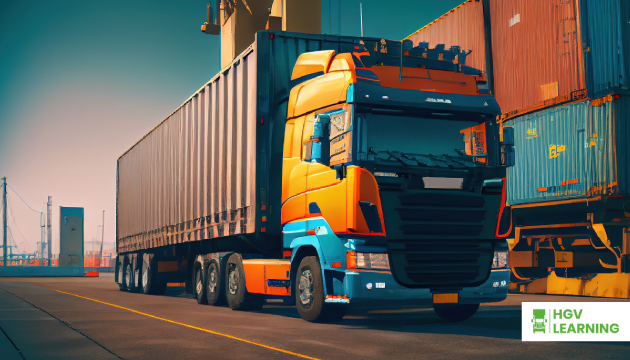Related Articles

28/10/2025
Preventing HGV Overloading: Legal Limits and On-the-Road Consequences

21/10/2025

If you’re considering driving HGVs across borders or switching between the UK and EU job markets, understanding the differences in HGV licence requirements is essential. Post-Brexit changes have impacted recognition, training standards, and the administrative process for international drivers. In this guide, we break down the UK HGV vs EU HGV licence comparison to help you navigate the legal and logistical differences that now exist.
The most notable difference since Brexit is that UK-issued HGV licences are no longer automatically recognised across the EU. Similarly, EU-issued licences may not guarantee driving rights in the UK without proper documentation. This change affects how international drivers operate and move between countries.
In the past, mutual recognition allowed drivers with an HGV licence issued in one EU country to drive in any other EU country, including the UK. Now, UK drivers must check whether their licences are recognised in the EU member state they wish to work in. In many cases, additional paperwork or local testing may be required.
Conversely, EU drivers wanting to work in the UK must ensure their licence is valid under UK law. The UK government provides a list of countries with reciprocal arrangements, but this list varies and may require updates over time. Visit the DVLA for current rules.
Drivers should also be aware of time limits on using foreign licences. In the UK, EU drivers can typically use their existing licence for up to 12 months. After that, they may need to exchange it for a UK-issued one, depending on eligibility and residency status. Ignoring these timelines can lead to legal issues or penalties.
Another key difference is the structure and content of HGV training. While many of the fundamental driving skills remain the same, the way training is delivered and assessed may differ across countries.
In the UK, the Driver Certificate of Professional Competence (CPC) is mandatory for most professional HGV drivers. This includes both initial training and periodic refresher courses every five years. EU countries also require CPC, but variations in course structure and implementation can lead to confusion or the need for conversion when moving between regions.
Post-Brexit, the administrative burden for cross-border transport has increased. UK drivers working in the EU may need to provide proof of residency, a work permit, or even obtain a local driving permit, depending on the country. Similarly, EU drivers working in the UK must ensure their documentation complies with UK immigration and licensing standards.
The complexity of these requirements has had an impact on driver availability and international logistics. Employers and drivers alike must remain informed and proactive to avoid compliance issues.
One common scenario is that EU drivers now face longer lead times before they can begin working in the UK, due to the need for licence validation, visa processing, and documentation checks. Employers must account for these delays when hiring foreign drivers.
If you plan to drive commercially across the UK-EU border, it’s vital to understand the regulations around permits, vehicle standards, and professional qualifications. For example:
Planning ahead and staying compliant helps avoid delays and potential penalties during international journeys.
While both the UK and EU follow general international driving conventions, subtle differences in rules and enforcement can affect daily operations. For example, weight restrictions, rest period enforcement, and local road safety rules may vary slightly by country.
Drivers must also be aware of differences in road signs, speed limits, and preferred driving behaviour in each region. Adapting to these standards quickly is essential for safety and efficiency.
Understanding country-specific driver requirements, such as mandatory safety equipment, toll systems, and fuel regulations, can further ensure smooth journeys. Checking local regulations before each trip is always a good practice.
If you’re an EU driver planning to live and work in the UK, converting your licence to a UK-issued one may simplify paperwork and long-term compliance. This process typically involves a fee, form submission, and occasionally submitting additional ID or health certificates.
For UK drivers moving to an EU country, conversion rules vary depending on the destination. Some countries require re-taking theory or practical tests, while others may allow a straightforward exchange if eligibility criteria are met.
Some drivers choose to maintain licences in both regions if dual residency allows. This strategy can provide greater flexibility but comes with administrative responsibility.
With continued developments in international logistics, technology, and driver shortages, the relationship between UK and EU licence recognition may evolve. Trade agreements could lead to more streamlined mutual recognition in the future, especially as demand for skilled drivers rises on both sides of the Channel.
Additionally, new training standards and digital compliance tools may reduce the burden on drivers by automating paperwork and standardising certifications. UK-based companies working across Europe may also invest in partnerships or hubs within EU countries to simplify operations.
For drivers, staying up to date with industry news and investing in ongoing CPC training will help future-proof your career, regardless of regional shifts. Flexibility, certification awareness, and willingness to adapt are increasingly valuable traits in this profession.
Understanding the differences between UK and EU HGV licence requirements is crucial for anyone working in cross-border transport. From training obligations to permit requirements and recognition policies, the landscape has changed significantly since Brexit.
Staying informed ensures smooth transitions, legal compliance, and efficient operations. Whether you’re an employer hiring international drivers or an individual planning to work abroad, careful preparation is essential.
To explore HGV opportunities or find training suited to your location, visit our guide on how to get an HGV licence.

28/10/2025

21/10/2025
Complete the form below and we’ll contact you asap.

